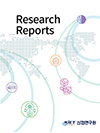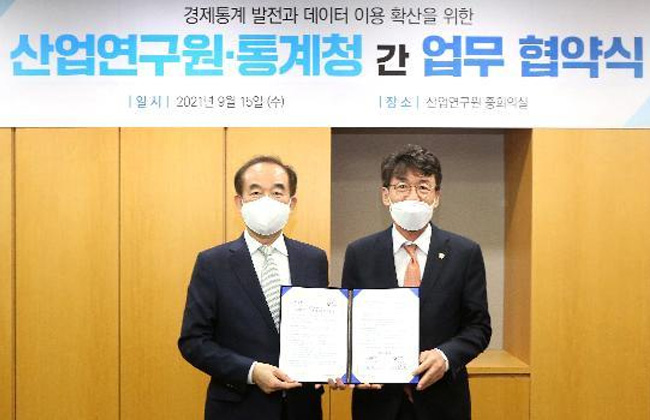Research Reports

The value chain between Korea and China has emerged as a key strategic issue. In the past, the relationship between Korea and China was characterized by a division of labor between industries, but, as they have developed, not only Chinese industries but now even Chinese products have come to rival their Korean counterparts. Thus an examination of the value is warranted to better understand the state of both competition and cooperation between Korea and China. Competition between Korea and China should be seen as competition between value chains; cooperation assumes more specific roles within these chains.
A comprehensive investigation of the competitiveness of majorindustries reveals the following. First, there a negligible gap between Korea and China in the steel industry, and we expect that the Chinese steel sector will be Korea’s equal in five years. There is, however, a slight gap in competitiveness in the automobile industry, with Korea some measure more advanced that China. And in the semiconductor sector, Korea is significantly more competitive than China now, and is expected to maintain its edge for the next five years, though afterward China should quickly narrow that gap.
In terms of the value chain, Korea has the upper hand in automotive design, internal combustion engine (ICE) R&D, green cars, overall procurement (ICE, green cars, smart cars, etc), and overall production (ICE, green cars, etc). However, the gap is modest outside the design, ICE development and procurement, and production stages of the chain.
In the steel industry value chain, Korea is slightly more competitive in process technology, product technology, and production (blast furnace and electric arc furnace hot-rolled steel sheets, surfacetreated steel sheets, steel bars, but not in procurement (iron ore, coking coal, ferroalloys). However, Korea’s competitive edge will disappear in five years, and it is expected that China will surpass Korea in process technology development..
In the semiconductor sector, China’s competitiveness is significantly ahead in EDA/IP, system semiconductor design, and back-end processes, but Korea is ahead of China in memory semiconductor design, equipment, front-end processes, and materials. Overall, Korea’s competitiveness is evaluated to be significantly higher than China’s competitiveness, and although China is catching up, it will still take time for it to reach the level of Korea.
While the relationship between Korea and China is shifting from cooperation to competition in most industries, this trend is particularly stark in the technology sector, where cooperation is becoming less and less common and competition is intensifying; cooperation is taking place mostly in research on localization. Recently, the number of fields that utilize Chinese technology is increasing. And moreover, it appears that Korea is highly dependent on China for procurement of parts and materials in several major industries. For example, Korean firms source as much as 37.9% of automotive parts from China. In the steel industry, Korean steelmakers import some ferroalloys, coking coal, and coke from China, but not a large proportion. Korea exports semiconductor manufacturing equipment to China, but Korea also imports manufacturing equipment parts from China. This is an area where mutual cooperation is taking place.
China has been a major production location for Korean firms throughout the manufacturing sector, but there are signs of change, with some Chinese industries beginning to enter Korea. In the production segments of key industries, competition is intensifying not only in the Chinese market but also in the domestic market.
Cooperation with China is mainly focused on strengthening local R&D to enter the Chinese market, identifying technology trends to utilize Chinese technologies, joint technology development in the eco-friendly field, joint response in areas where both countries are vulnerable, and joint responses in the Chinese market following the developments of the US-China conflict. The government’s policies for cooperation and market entry revolve around information collection support for product development tailored to the Chinese market, linkage support for utilizing Chinese technologies and systems, support for founding joint research efforts, designing trade strategies to appropriately respond to US–China disputes, support for Chinese market expansion, and support for diversifying procurement lines for parts and materials.
Most Korean industries are now fiercely competing with China, although this does vary somewhat throughout the value chain. In order to respond to future competition with China, it is necessary to
continuously maintain a competitive edge in areas where Korea has an advantage, and to strengthen competitiveness in areas where Korea is weak. Furthermore, Korea should take into account new industries or promising future sectors.

The works on this page are licensed for fair use under the provisions of the Korea Open Government License. See kogl.or.kr for more information.
Please enter the security text below
to prevent email collection
Please check the information of the person in charge.
연구과제 제안이 접수되었습니다.
신청이 접수되었습니다.


View Summary
코로나19 발생 이후 대부분의 고용 관심사가 항공 및 여행서비스, 음식·숙박 서비스 등 주로 서비스 업종에 집중된 상황에서 본 연구는 최근 그 중요성이 강조되고 있는 제조업의 고용변화를 살펴보았다. 분석에 따르면, 코로나19 이후 제조업 고용은 비교적 큰 충격 없이 빠르게 회복하는 모습을 보이고 있다. 제조업 고용은 서비스업에 비해 큰 충격 없이 유지되고 있고, 코로나19 직후 2020년 상반기에 약간 하락하였지만 하반기부터 회복 추세를 보이고 있으며, OECD 주요국의 제조업과 비교하여도 일본과 함께 고용 충격이 비교적 작게 나타나고 있다. 그러나 전반적으로 양호한 고용 성적에도 불구하고 제조업 내 특성 별로는 차이가 나타나는 것으로 보인다. 종사상 지위 별로 보면, 임시·일용직, 고용원이 있는 자영업자에서 고용 충격이 상대적으로 크게 나타났고, 상용직과 고용원이 없는 자영업자는 큰 충격이 없는 것으로 나타났다. 제조업 규모별로는 300인 이상의 경우 코로나 발생 초기 약간의 충격 이후 고용이 빠르게 반등하면서 코로나 이전보다 고용이 더 증가한 반면, 이보다 작은 규모의 제조업체들의 경우 고용 회복이 더디게 나타나고 있다. 고용의 중장기, 단기 추세선을 비교한 결과 제조업 업종에 따른 차이를 보였다. 코로나 발생 이전 3년간의 추세선을 2020년 1월부터 연장한 선과, 2020년 1월부터의 실제 자료를 이용한 단기 추세선을 비교한 결과, 의약품은 코로나19 발생 이전부터 시작하여 코로나19 발생 이후에도 견조한 증가세를 유지하고 있으며, 전자부품·컴퓨터, 기타운송장비, 가구는 코로나19 이후 오히려 고용 추세가 개선되었다. 그러나 다수 업종은 코로나 발생 이후 고용이 하락하였는데, 특히, 비금속광물, 1차금속, 금속가공 분야나 인쇄·기록매체 업종에서 하락이 상대적으로 크게 나타났다.
The following information is provided.
inform@kiet.re.krPlease complete the CAPTCHA below.
[전지적키에트시점] (Eng sub)심상치 않은
국내 대기업 움직임??
KIET 시점에서 보는 미래 로봇 산업 전망은
어떨까요?
경제전문가가 알려드립니다!
(산업연구원 박상수 실장)


